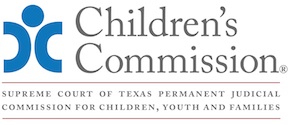
Texas Child Protection Law Bench Book
Updated September 2025
Practice Tips
Tips to Improve Decision-Making in Child Welfare Hearings[288]
Consider these important concepts when serving children, youth, and families involved in the child welfare system so that their individualized needs are identified and addressed.
• Make sure parties and key witnesses are present and if they are not present, verify whether they were properly served/subpoenaed.
• Review petition out loud with all parties present to ensure it includes allegations specific to each parent. If there is no dangerous act or omission on part of a parent, the child goes home with that parent.
• Engage the parents by name and allow parents, youth, and caregivers an opportunity to be heard.
• Inquire if reasonable efforts were made to prevent removal. Assure family decision making tools were utilized, such as a Family Team Meeting (FTM).
• Ask yourself if the family's background, customs, and traditions have been taken into account with the events and circumstances that led to the removal. Think about whether these aspects of the family actually make a child unsafe or at risk, even if they are different from your own expectations of family life and parenting.
• Ask what is preventing the child from returning home or to a relative TODAY? And consider whether any of the barriers preventing the child from returning home are related to a systemic issue that is making it more difficult for the parent or child to access the support they need.
• Consider the appropriateness of current placement and whether it provides trauma responsive supports and services.
• Allow opportunity during the hearing for discussion and concerns related to systemic issues for parents and/or children involved in the case.
• Close the hearing with a specific question to ensure that the parties understand what happened or allow an opportunity for parents to ask questions about anything they did not understand.
.